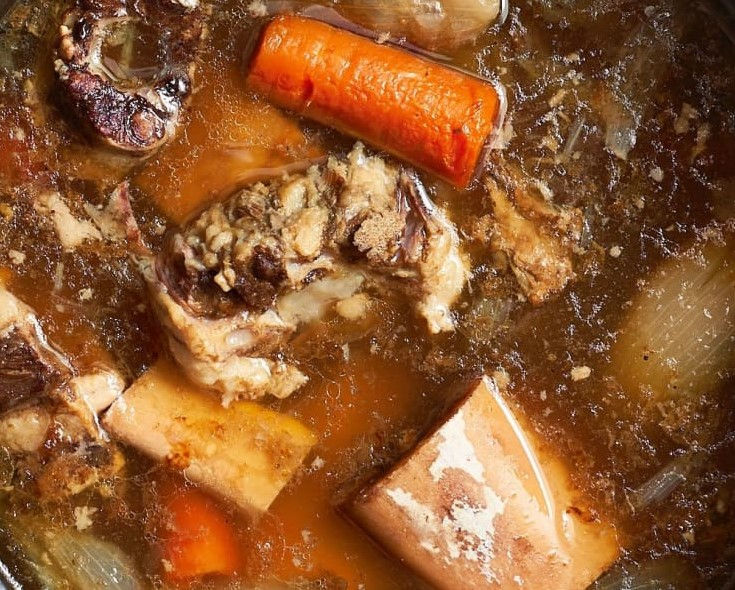NO MORE REAL SAUCE FOR THE GOOSE
- gfmeade7
- Mar 25
- 3 min read

There is one element of cooking these days that has deteriorated beyond redemption and that is sauce making. There is simply just not enough time or expertise in professional kitchens anymore to produce the standard of sauces there would have been in the past. The base of any good sauce is a fresh stock and it’s rare these days to see a stockpot simmering away on a stove never mind the detailed training to make proper sauces even if it was. Most sauces now will have a convenience stock from a cube, powder or jelly in order to bypass the traditional method of achieving a meaty, fishy or veggie flavour.
I still vividly recall the first time as a seventies child I tasted a chasseur sauce made by a family friend who had au paired in fifties Paris. She returned later to settle back in Ireland but not forgetting the exquisite culinary skills she had learned from living in a French home which were totally alien to an Ireland of the time. She also dazzled me with my first taste of a hollandaise sauce. Then a decade later when I started training, the stockpot was still at the heart of a kitchen and finally when I moved to more sophisticated food operations here and abroad I truly saw how vital a real stock was to creating successful dishes.

All this came to mind when I was teaching sauce making to a class of chefs lately and explaining to them that we actually have a group of what are termed mother or foundation sauces from which most others are then derived. These are namely a standard beef or lamb flavoured light, gravy made from a brown stock by the roasting of the bones and cooking them for a few hours with some vegetables and water before thickening with a mix of flour and fat called a roux.
Then there is the equivalent version called a veloute made with a white meat or fish stock. The third equally versatile type is the classic béchamel or white creamy sauce made from milk. There are two other special sauces in this group namely a standard tomato sauce and then the aforementioned hollandaise which is a pure butter sauce. All chefs in the past would have to master the execution of these famous five before they were ever allowed to call themselves a chef. There was a sixth but cold sauce too that had to be learned from scratch which is mayonnaise. I cannot recall the last time I tasted a freshly made mayonnaise in a restaurant dish. Of course there are a myriad of unique sauces too like mint, cranberry, horseradish, apple, curry, chilli and bread to name just a few.

The art of sauce making took a pivot during the culinary revolution of the eighties with more emphasis on lightness, leaving out the flour and focussing on greater depth of flavour by reducing the stock with further boiling so it was much more concentrated in flavour and actually thickening by itself to become a jus in the process. Then a little butter would be added in the end for extra richness, flavour and shine.
For those of us who were taught in the old cooking methods we had to then go and learn all the new modern techniques but today most chefs are sadly learning neither or are even formally trained. Just like there is convenience stock, the sauces too can be bought ready to make by just adding water to a powder mix. Sauces have gone the same way as a lot of cooking with the demand for a fast track solution so an end product can be delivered in the shortest time with the minimum effort and expense.
The reality is though that nothing beats a wonderful, velvety and deeply flavoured sauce that was made the correct way and it is accompanying a perfectly grilled piece of meat or fish. Then you finally enjoy the pleasure of mopping the remnants of it up off the plate with a crusty piece of white bread. That is true eating with pleasure which only a real sauce can deliver for you.







Such a thoughtful reflection on the lost art of real sauce making! Nothing beats the depth and richness of a sauce made from fresh stock—truly the heart of great cooking. Hopefully, more chefs will revive these classic skills soon! https://glandorefoods.ie/